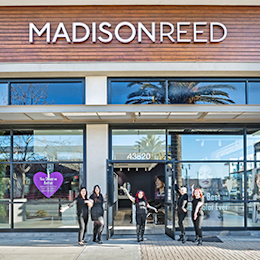Lowlights vs. highlights – what’s the difference between them? As the name suggests, lowlights involve darkening your hair strands, while highlights do the opposite, making them brighter. With both processes, you can achieve a significant contrast or add a natural, sun-kissed look to your hair. Do you want to learn more? Then you’re in the right place – read on!
Lowlights vs. Highlights: What Are They?
For starters, let's chat about hair lowlights and highlights separately.
Lowlights
Lowlights are simply strands of hair colored darker than the lightest areas of your hair. They can be done to add contrast and depth to your hair, as well as to make it look thicker. Additionally, lowlights are perfect for creating dimension for hair that has gotten overly light with highlighting or if the color has faded too light in the sun – but you don't want it to look darker overall.
Highlights
Highlights are strands of hair that are lighter than your overall base color. They can be both drastic (creating high visible contrast), or barely noticeable (babylights), adding lightness to your hair without being too obvious.
Highlights are usually associated with blonde, but they are gorgeous on darker shades too! If you are a brunette, for example, you can still get your hair highlighted to a light brown – or if your hair is black, you can get it highlighted to a medium-dark brown color.
Lowlights vs. Highlights: What’s the Difference?
The only key difference between lowlights and highlights is the shade with which you color your hair. The former goes darker than the base and the latter goes lighter. This leads to some other minor differences as well depending on which one you choose. Let’s take a look at them:
Maintenance: lowlights fade more naturally, so they don’t need as much maintenance as highlights, which become much more noticeable as time passes
Cost: due to less frequent touch-ups, lowlights are usually less expensive than highlights
Hair health: since lowlights don’t require you to use a lightener, there is less chemical processing on the hair – this is ideal if your hair feels more on the fragile side











